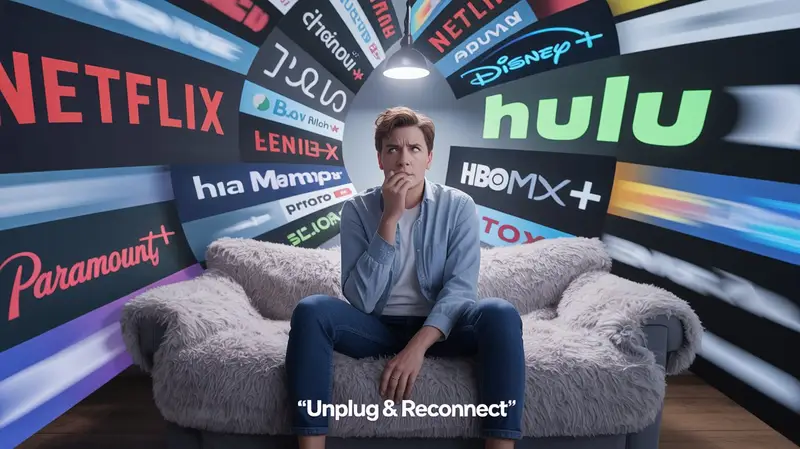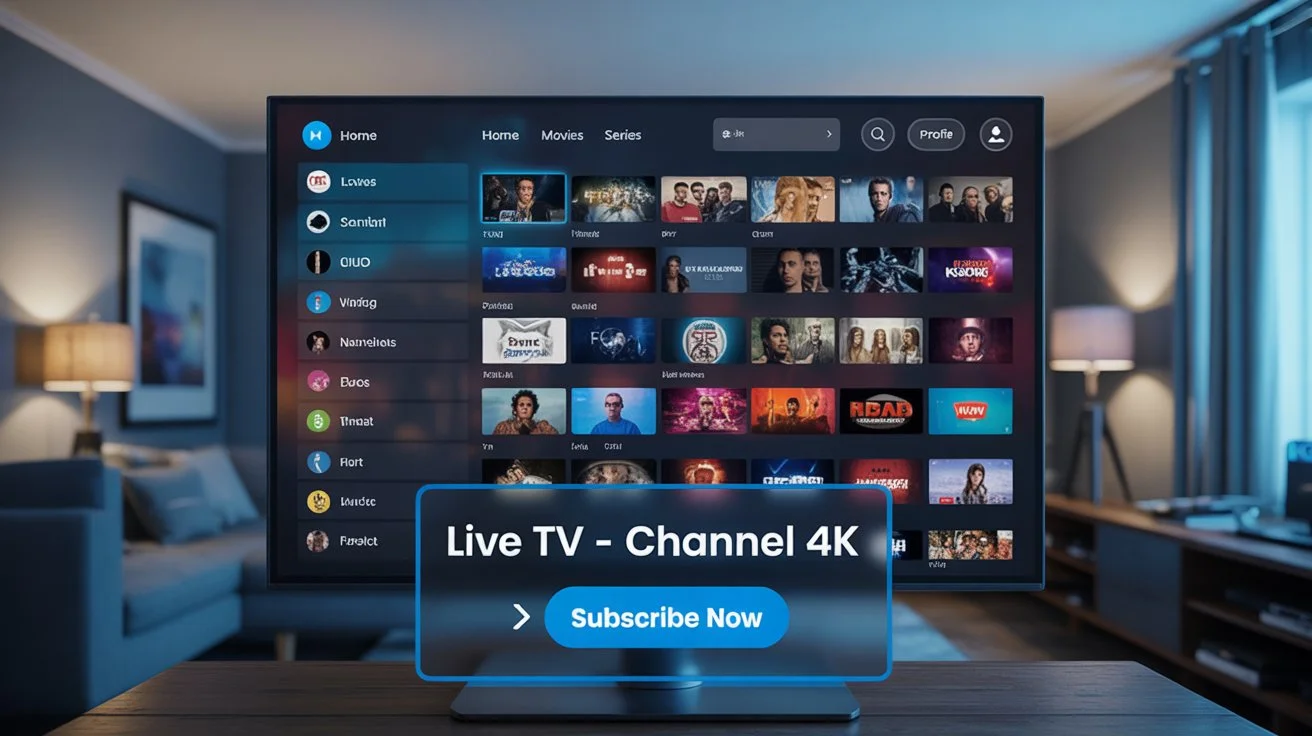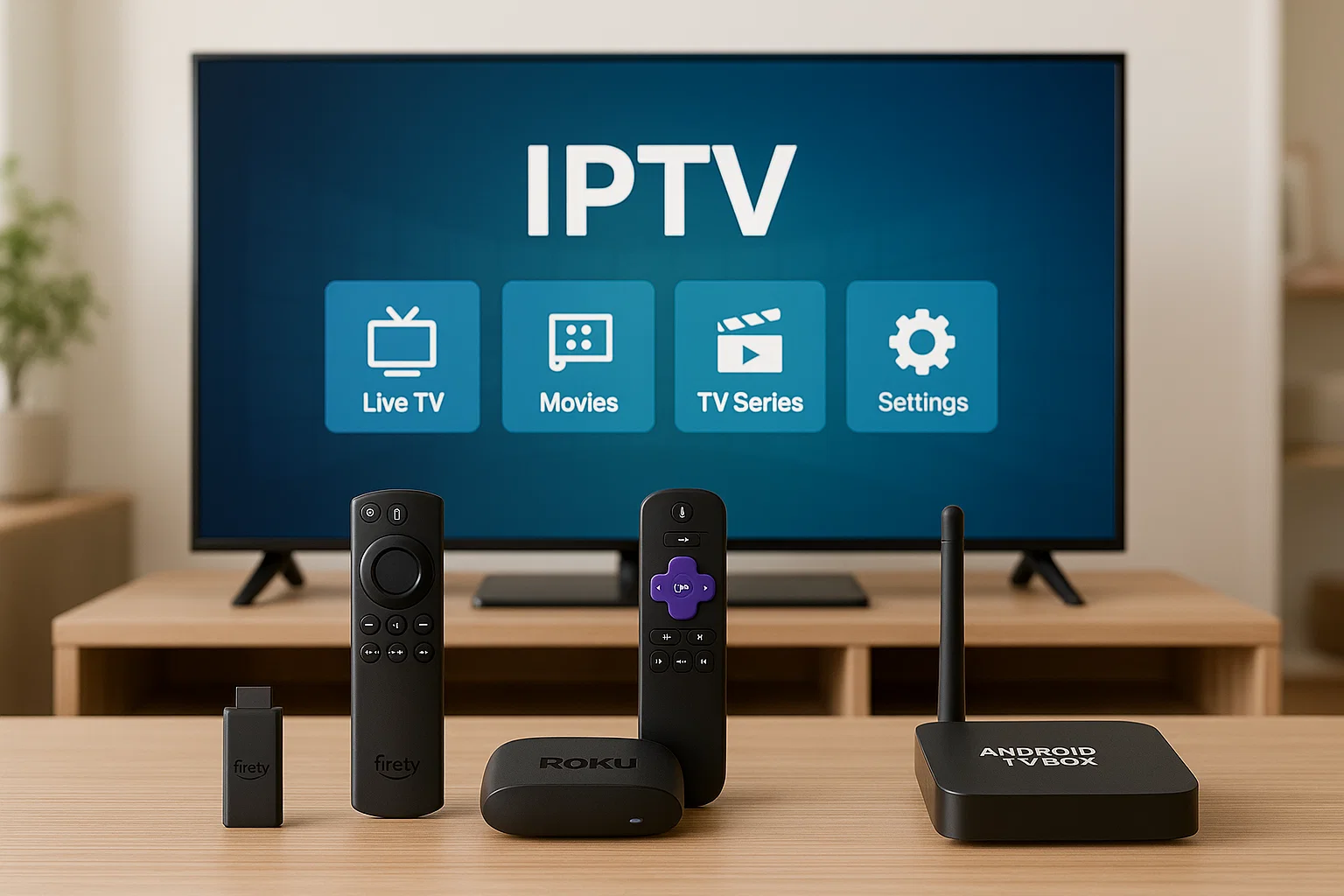What is Subscription Fatigue?
Intro
Subscription fatigue is a term used to describe the feeling of being overwhelmed by the sheer number of paid subscriptions one is expected to manage. In a world where consumers already subscribe to everything from food delivery services to fitness apps, the addition of multiple streaming services has led to a growing sense of burnout. People are tired of keeping track of various subscriptions, each with their own billing cycles, passwords, and content offerings. Furthermore, when the combined cost of all these subscriptions reaches a significant monthly sum, it makes many consumers question whether they are truly getting their money’s worth.
The Growing Popularity of Streaming Services
There was a time when cable TV ruled the roost, and it seemed like there was no alternative. But over the past decade, streaming services like Netflix, Hulu, Amazon Prime, and Disney+ have surged in popularity. They offer more flexibility, lower costs, and often a broader selection of content. Consumers have flocked to these services because they cater to modern viewing habits: the ability to watch on-demand, across multiple devices, and without the need for a cable box or satellite dish.
While this growth in streaming options has brought about many benefits for consumers, it has also led to increased competition and the splintering of content. As a result, viewers are now faced with the dilemma of whether to subscribe to multiple services in order to access the content they want. The consequences? Higher costs, more choices, and more frustration.
The Rise of Streaming Services
From Cable to Streaming: The Shift in Media Consumption
The shift from cable TV to streaming services is one of the most significant changes in how we consume media. Cable used to be the dominant way for people to access TV shows, movies, and news. But with high costs, limited flexibility, and the need for specialized equipment, cable companies struggled to keep up with the evolving needs of modern consumers. In contrast, streaming platforms have eliminated the need for bulky hardware, offered on-demand content, and provided access to a vast library of movies, shows, and documentaries without the hefty subscription fees of traditional cable packages.
Moreover, the ease with which users can sign up for a streaming service has made it an appealing choice. The days of needing a technician to install a satellite dish or cable box are long gone. Now, with just a few clicks, users can be watching their favorite content in a matter of minutes, from any device that connects to the internet. This convenience has driven millions to ditch traditional TV in favor of streaming services.
The Explosion of Subscription-Based Platforms
Over the past few years, the streaming market has exploded. What started with Netflix as the dominant player has expanded to include platforms like Disney+, Apple TV+, HBO Max, and Peacock. Each new platform brings its own unique content, catering to various niches and tastes. Whether you’re into action-packed blockbusters, feel-good romantic comedies, or cutting-edge documentaries, there’s now a streaming platform for nearly every genre and interest.
However, this explosion of options is exactly what’s contributing to subscription fatigue. Consumers are being faced with an overwhelming number of choices, and many are beginning to feel that the cost of subscribing to each service is no longer justifiable. As a result, many are rethinking their subscriptions and looking for ways to cut down on costs while still enjoying their favorite content.
The Advantages of Streaming Services Over Traditional TV
Despite the growing number of streaming platforms, there are still several key advantages that streaming services offer over traditional TV. For one, the cost of streaming services is often far less than traditional cable or satellite TV subscriptions. With traditional TV, consumers were often locked into long-term contracts, forced to pay for channels they didn’t watch, and subject to price hikes year after year. Streaming services, on the other hand, allow for more flexible subscription options, often with the ability to cancel at any time.
Additionally, streaming services offer the convenience of on-demand viewing. Gone are the days of waiting for your favorite show to air at a specific time. With streaming, you can watch whenever you want, wherever you want. And unlike cable, which might have limited access to certain shows or movies, streaming platforms often have vast libraries of content to explore.
The Impact of Multiple Subscriptions
Financial Strain on Consumers
One of the most significant downsides of subscribing to multiple streaming services is the financial burden it can place on consumers. While each individual service may seem affordable on its own, when you start subscribing to five or six platforms, the cost quickly adds up. For many, the combined monthly payments for services like Netflix, Hulu, Disney+, Apple TV+, and Amazon Prime can rival the cost of a traditional cable package.
This financial strain is compounded by the fact that many of these services are constantly raising their prices. For example, Netflix has raised its subscription fees multiple times in recent years, and other platforms like Hulu and Disney+ have followed suit. As a result, viewers are paying more for less—less content, less value, and less flexibility.
The Overwhelming Choice
In addition to the financial strain, the sheer number of streaming platforms to choose from can be overwhelming. It’s no longer just about picking a few services; viewers now have to navigate a sea of options, each with its own unique offerings. As new platforms continue to emerge, the question becomes: Which ones are worth subscribing to, and which ones can be skipped?
The abundance of choices can lead to decision paralysis, where viewers spend more time debating which service to subscribe to than actually watching content. This can create a sense of frustration, as viewers realize they’re paying for subscriptions that they don’t always have time to use. The end result is often a sense of dissatisfaction and a growing desire to simplify their entertainment options.
Hidden Fees and Charges
Another aspect of subscription fatigue is the hidden fees and charges that many streaming services tack on. For example, many platforms offer “basic” subscription plans with ads, but the user experience is often poor due to interruptions. In some cases, viewers are forced to upgrade to premium plans just to avoid these ads. Additionally, many streaming services include extra costs for accessing certain content or for subscribing to additional services like live TV channels.
These hidden costs make it harder for consumers to accurately assess the true cost of their streaming habits. As a result, many viewers are finding themselves paying far more than they initially expected. This can lead to frustration and resentment toward streaming services, which were once seen as a more affordable alternative to traditional TV.
Why Viewers Are Reassessing Paid Streaming ?
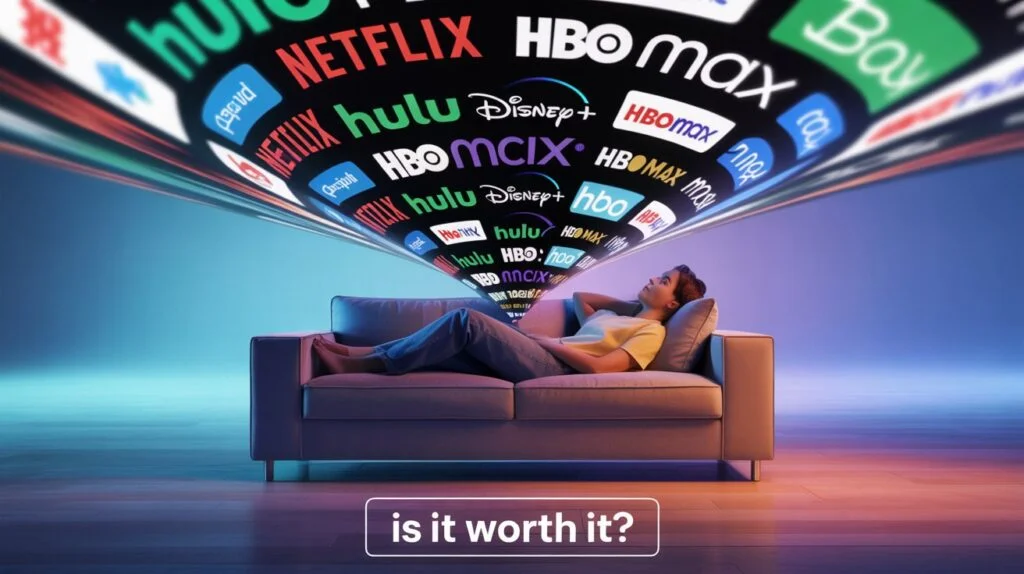
As subscription fatigue sets in, viewers are becoming more discerning about where they spend their entertainment dollars. While streaming services have certainly changed the media landscape for the better in many ways, they are not without their drawbacks. Consumers are now questioning whether these services are still worth the money they are spending, particularly as they grapple with rising costs, fragmented content, and a generally overwhelming number of choices.
Increased Monthly Costs
When streaming services first appeared on the scene, they were marketed as affordable alternatives to expensive cable subscriptions. Indeed, services like Netflix, Hulu, and Amazon Prime initially provided ample content for a relatively low monthly fee. However, as time has passed, many of these platforms have gradually raised their subscription fees.
For instance, Netflix’s standard plan has increased in price several times in the past few years, and even more dramatic increases are anticipated in the near future. Similarly, Hulu and Disney+ have also bumped their rates, leaving customers with higher monthly bills than they originally signed up for. As viewers try to balance their budgets, this price creep has led many to reconsider their subscriptions.
This price inflation, coupled with the lack of additional value from many platforms, has caused viewers to wonder if they are truly getting their money’s worth. The rise in costs can often lead to dissatisfaction, making people feel as though they are not receiving enough new or compelling content for the price they’re paying.
Content Fragmentation Across Platforms
Another key reason viewers are rethinking paid streaming is content fragmentation. The days of having a single platform where all your favorite content is available are gone. In today’s streaming landscape, specific shows or movies are often exclusive to a particular service, which means that in order to access all the content you want, you need to subscribe to multiple services.
For example, if you love Marvel movies, you’ll need Disney+; for popular HBO shows like “Game of Thrones,” you’ll need HBO Max; for Netflix originals, of course, you need Netflix. With each platform vying for exclusive rights to premium content, the average consumer is finding themselves signing up for a myriad of services. As a result, people are increasingly asking themselves if subscribing to so many platforms is worth the cost, or if they’re better off just cutting back and waiting for shows to be available on other platforms or DVD releases.
This fragmentation can also make it difficult to keep track of where to find a particular show, adding yet another layer of frustration to an already convoluted landscape. This scattered approach to content distribution detracts from the convenience that streaming services once offered and has become a key factor in the rise of subscription fatigue.
Declining Content Quality
The quantity of content offered by streaming platforms may have exploded, but the quality of that content is increasingly becoming a concern for viewers. With platforms in a race to release new shows and movies as quickly as possible, some have sacrificed quality for quantity. Instead of offering a carefully curated selection of top-tier content, many services now flood their libraries with subpar originals and mediocre shows in an attempt to attract subscribers.
While some platforms like HBO Max and Apple TV+ still invest heavily in producing high-quality content, others—such as Netflix—have been criticized for churning out numerous low-budget original films and shows. As a result, viewers may find themselves scrolling through endless options, but struggle to find something that truly grabs their attention. In a time when viewers are increasingly selective about what they consume, a lack of high-quality content is a major deterrent.
This decline in content quality is one of the driving forces behind the reassessment of paid streaming services. Consumers who were once eager to sign up for multiple platforms are now taking a step back and considering whether the content available is worth the ever-increasing subscription fees.
Advertisements in Streaming Services
Another growing issue that’s making viewers rethink their subscriptions is the rise of advertisements in streaming services. What started as a rare inconvenience is quickly becoming the norm. While Netflix has long been ad-free, platforms like Hulu, Peacock, and others have introduced ad-supported tiers to offer lower prices.
For many subscribers, paying a premium price for streaming services with ads can feel like a bait-and-switch. These ads are often intrusive, interrupting the flow of content and making the viewing experience less enjoyable. As ad-supported tiers become more widespread, viewers are becoming frustrated by what they see as a step backward in the convenience and simplicity that streaming once promised.
Moreover, as subscription fees continue to rise, the idea of paying for an ad-supported version of a service is beginning to feel contradictory. After all, why should consumers have to endure advertisements after already paying for a subscription? This growing trend could be another contributing factor to why viewers are rethinking their streaming subscriptions and exploring alternatives.
Alternative Solutions to Subscription Fatigue

In response to subscription fatigue, many viewers are turning to alternative solutions to reduce their streaming costs while still maintaining access to their favorite content. Whether it’s through free services, bundled packages, or sharing family plans, there are ways to make streaming more affordable and convenient.
Free Streaming Platforms
For those who are feeling the pinch from subscription costs, free streaming platforms offer a viable solution. Services like Tubi, Pluto TV, and Crackle allow viewers to watch movies and TV shows without having to pay a subscription fee. While these platforms are ad-supported, they offer a wide variety of content and can be a great option for viewers who are tired of paying for multiple subscriptions.
While free streaming platforms may not have the same vast libraries as paid services like Netflix or Disney+, they often carry a mix of classic films, older TV shows, and a variety of genres that can provide hours of entertainment. This is a growing trend as consumers look for ways to avoid subscription overload, and it represents a shift back toward ad-supported content, albeit in a different form than traditional TV.
Bundled Subscription Packages
Another solution that has emerged is bundled subscription packages. Some streaming platforms are offering bundles, where subscribers can access multiple services for a lower price than subscribing individually. For example, Disney offers bundles that combine Disney+, Hulu, and ESPN+ into one affordable package. Similarly, Amazon Prime offers access to Prime Video, music streaming, and even shopping benefits for a single annual fee.
Bundled packages can be an excellent option for viewers who want to access multiple services without feeling overwhelmed by individual subscription fees. However, they still come with their own challenges, such as potentially forcing users to pay for services they don’t use regularly. Nonetheless, they provide a more cost-effective way to enjoy a range of content under one umbrella, alleviating some of the pressure caused by subscription fatigue.
Shared Family Plans
Many streaming services now offer family plans, which allow users to share their subscriptions with multiple household members. This can help cut costs significantly, as the subscription fee is divided among several users. For example, Netflix and Hulu both offer family plans that allow users to stream content on multiple devices simultaneously.
Sharing family plans can be a great way to enjoy paid streaming services without bearing the full cost. However, the trade-off is that account sharing can sometimes lead to complications, such as the risk of overloading the account with too many users or running into issues with geographic restrictions. Even so, for many households, this is an affordable and practical option to avoid the strain of paying for multiple individual subscriptions.
The Future of Streaming: What’s Next?
The streaming landscape has undoubtedly evolved over the years, and with subscription fatigue growing among viewers, the industry is facing a critical juncture. To stay competitive and continue to attract subscribers, streaming platforms will need to adapt to the changing needs and preferences of consumers. Below, we explore some of the potential future developments in the streaming world.
The Role of Hybrid Models (Ad-Supported & Premium Options)
One potential future direction for streaming services is the increased use of hybrid models, where platforms offer both ad-supported and premium (ad-free) tiers. This model has already been implemented by several major services, such as Hulu, Peacock, and even Netflix, with varying degrees of success.
For viewers, these hybrid models provide more flexibility, allowing them to choose between a cheaper, ad-supported option or a more expensive, ad-free experience. This flexibility can appeal to a wider range of consumers, from those who don’t mind watching ads to those who prefer an uninterrupted viewing experience.
As the number of platforms offering this dual-tier option increases, it could help mitigate subscription fatigue by providing consumers with more control over how much they spend while still gaining access to the content they enjoy. Furthermore, it might help to offset the rising costs of streaming by introducing a new revenue stream through ads, thereby making subscriptions more affordable for users.
The Potential of User-Generated Content
In an era where consumers are not only content consumers but also content creators, user-generated content (UGC) could play a more prominent role in the future of streaming. Platforms like YouTube and TikTok have already proven that users enjoy creating and sharing their own content, and some streaming services are beginning to tap into this trend.
For example, Netflix has started to incorporate more interactive and user-driven content, such as “Choose Your Own Adventure”-style shows. Additionally, some services are experimenting with allowing viewers to submit their own content for consideration or hosting user-driven channels. This trend has the potential to reshape the streaming ecosystem by offering unique, personalized, and even niche content that wouldn’t necessarily come from traditional content creators or studios.
By embracing UGC, streaming services can cater to an increasingly engaged and creative audience. The shift could also encourage viewers to become more invested in the platforms they use, as they would have a role in shaping the content they consume. Furthermore, this could help to address the issue of content saturation by offering fresh, diverse, and crowd-sourced entertainment.
The Increasing Importance of Content Personalization
As the competition for subscribers intensifies, content personalization is expected to become a more significant focus for streaming platforms. With the help of sophisticated algorithms and data analytics, platforms are already recommending content tailored to viewers’ preferences. However, there is still room for improvement in this area.
In the future, streaming services may take personalization to the next level by providing hyper-targeted content recommendations based not only on viewing habits but also on mood, time of day, and even personal preferences. This could result in a highly individualized streaming experience, where users feel as though the platform understands their needs and can consistently deliver content that resonates with them.
Moreover, personalized content could extend to more than just movies and TV shows. Streaming platforms could offer curated playlists, live-streamed events, or interactive experiences tailored to each user’s preferences. By doing so, platforms would be able to create a more engaging and valuable experience, encouraging users to remain subscribed and reducing the likelihood of cancellation.
Conclusion
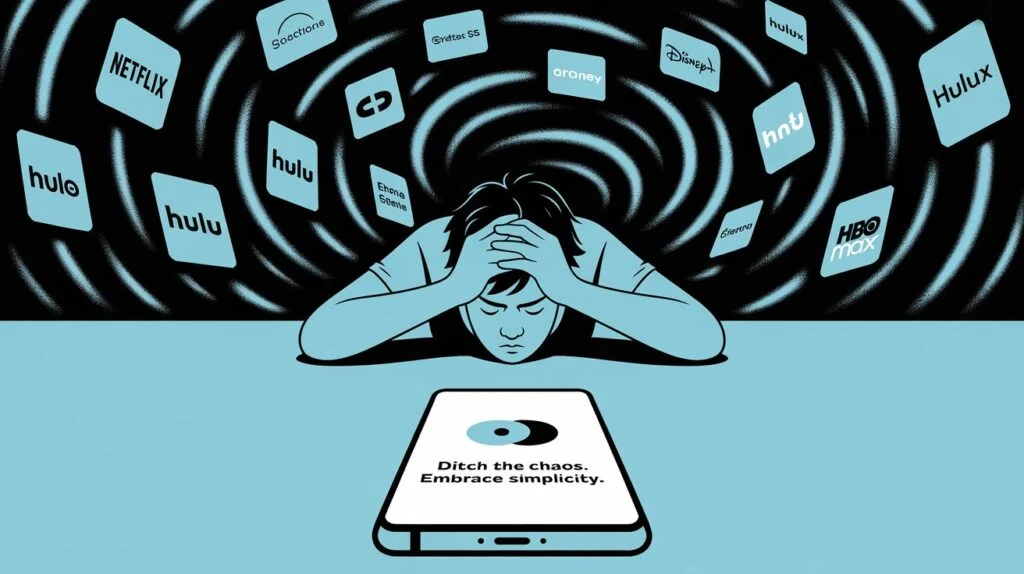
Subscription fatigue is not just a passing trend; it’s a response to the increasing complexity, cost, and fragmentation of the streaming industry. As more viewers rethink their streaming subscriptions, they’re demanding more value, better content, and more flexible options. Streaming services that fail to adapt to these shifting expectations may find themselves losing customers in favor of more affordable, streamlined, and user-friendly alternatives.
Is Subscription Fatigue the Beginning of a Shift?
There’s no doubt that subscription fatigue is pushing the industry toward change. As consumers increasingly look for ways to consolidate their subscriptions and cut costs, we are seeing a shift in how platforms operate. More services are experimenting with ad-supported models, bundling options, and even user-generated content, all in an effort to meet the demands of modern viewers.
While it’s impossible to predict the exact future of streaming, one thing is clear: streaming platforms will need to continue to innovate and evolve to stay relevant in an increasingly saturated market. This may mean focusing on delivering better content, improving user experiences, or offering more affordable options to attract and retain subscribers.
How Consumers Can Navigate the Streaming Landscape
For consumers looking to avoid subscription fatigue, there are several strategies to navigate the ever-growing streaming landscape. First, take an honest look at what you’re actually watching. If there are multiple services that offer similar content, consider consolidating your subscriptions to the ones that deliver the best value. Second, keep an eye out for bundled packages or family plans that allow you to share the cost with others. Finally, explore free streaming platforms and ad-supported options if you’re looking to cut back on expenses.
Ultimately, the future of streaming will depend on how well platforms can balance the needs of consumers with the demands of an increasingly competitive market. By staying informed and flexible, viewers can make smart decisions about their subscriptions and avoid falling into the trap of subscription fatigue.
FAQs
What Is Subscription Fatigue?
Subscription fatigue refers to the feeling of being overwhelmed by managing multiple paid subscriptions, especially as the costs add up over time. With so many services to choose from, consumers can become frustrated with having to manage numerous subscriptions and find it difficult to keep track of where their money is going.
Are Streaming Services Becoming More Expensive?
Yes, many streaming services have raised their subscription fees in recent years. While they started as affordable alternatives to cable TV, the rising costs of content production and inflation have led many platforms to increase their fees. This trend is a major factor contributing to subscription fatigue.
What Are the Best Free Streaming Options?
There are several free streaming platforms available, such as Tubi, Pluto TV, and Crackle. These services offer a variety of content for free, though they are ad-supported. While they may not have the same selection as paid services, they provide a great alternative for viewers looking to cut costs.
Will Ads in Streaming Services Become More Common?
It’s likely. With the increasing popularity of ad-supported tiers, more platforms are introducing ads to their services in order to offer cheaper subscription options. This trend is likely to continue as streaming services look for ways to monetize their offerings without raising prices too dramatically.
How Can Consumers Avoid Subscription Overload?
To avoid subscription overload, consumers should evaluate their viewing habits and prioritize the services they use most. Look for bundles, family plans, or free streaming options, and avoid subscribing to multiple services that offer similar content. Additionally, consider using free trials before committing to long-term subscriptions to ensure you’re getting the best value.
